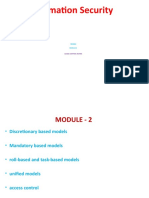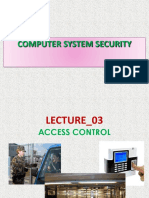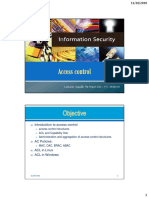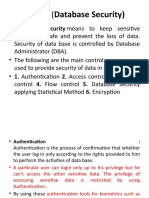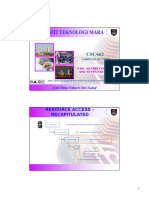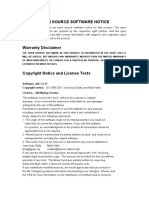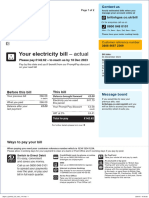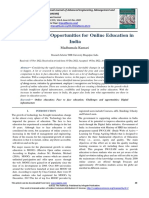0% found this document useful (0 votes)
18 views21 pagesAccess Control - Lect 2 - Access Control
The document discusses access control in information security, emphasizing the importance of authorization and authentication to protect resources from unauthorized access. It outlines various access control models, including Discretionary Access Control (DAC), Mandatory Access Control (MAC), and Role-Based Access Control (RBAC), along with their respective techniques and frameworks. Additionally, it covers specific models like the Bell-LaPadulla and Biba models, detailing their rules and implications for confidentiality and integrity.
Uploaded by
aditi.pandeyCopyright
© © All Rights Reserved
We take content rights seriously. If you suspect this is your content, claim it here.
Available Formats
Download as PDF, TXT or read online on Scribd
0% found this document useful (0 votes)
18 views21 pagesAccess Control - Lect 2 - Access Control
The document discusses access control in information security, emphasizing the importance of authorization and authentication to protect resources from unauthorized access. It outlines various access control models, including Discretionary Access Control (DAC), Mandatory Access Control (MAC), and Role-Based Access Control (RBAC), along with their respective techniques and frameworks. Additionally, it covers specific models like the Bell-LaPadulla and Biba models, detailing their rules and implications for confidentiality and integrity.
Uploaded by
aditi.pandeyCopyright
© © All Rights Reserved
We take content rights seriously. If you suspect this is your content, claim it here.
Available Formats
Download as PDF, TXT or read online on Scribd
/ 21






